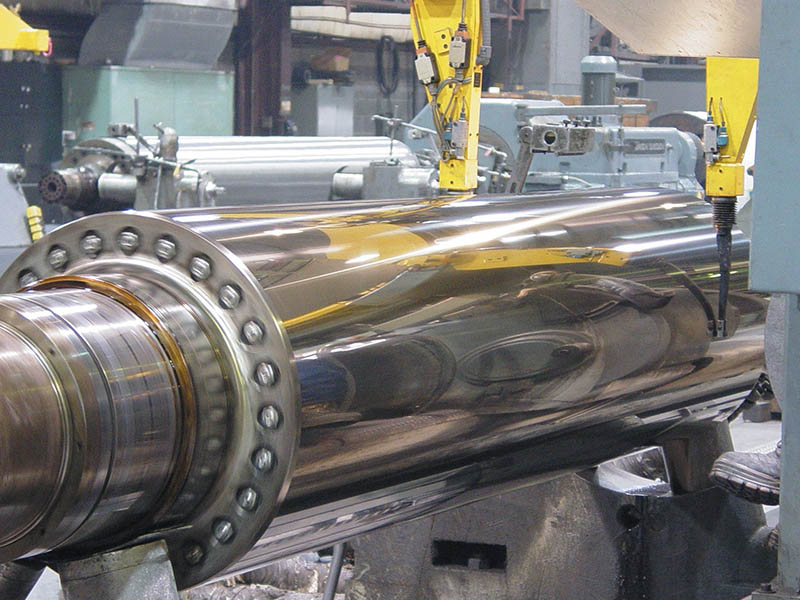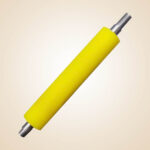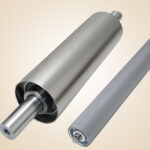Industrial rollers are essential components in manufacturing, material handling, and conveyor systems. Over time, they experience wear and tear, leading to reduced efficiency, performance issues, and potential operational downtime. Replacing industrial rollers at the right time is crucial to maintaining smooth production processes. Siva Rollers, a trusted manufacturer and supplier of industrial rollers in Ahmedabad, delivers high-quality rollers across India. In this guide, we’ll walk you through the industrial roller replacement process, signs that indicate the need for replacement, and best practices for selecting new rollers.
Signs That Indicate Roller Replacement
Industrial rollers are subjected to continuous use, making it important to monitor their condition regularly. Here are key indicators that suggest it’s time to replace them:
1. Excessive Wear and Surface Damage
- Cracks, dents, or deformation on the roller surface.
- Flattened or uneven areas affecting performance.
- Visible corrosion or rust (for metal rollers).
2. Reduced Efficiency and Performance
- Rollers fail to move materials smoothly.
- Increased resistance or friction leading to overheating.
- Conveyor belt misalignment due to faulty rollers.
3. Unusual Noises and Vibrations
- Grinding, squeaking, or rattling sounds indicate internal damage.
- Excessive vibration can lead to further damage in the system.
4. Frequent Maintenance Issues
- If rollers require constant lubrication or realignment, replacement is a cost-effective option.
- Regular breakdowns increase downtime and operational costs.
5. Bearing Failure
- Worn-out bearings lead to misalignment and inefficiencies.
- Broken or seized bearings require immediate replacement to avoid system failures.
Step-by-Step Industrial Roller Replacement Guide
Once you identify the need for roller replacement, follow these steps to ensure a smooth transition:
Step 1: Assess the Existing Rollers
- Check roller specifications, including diameter, length, material, and load capacity.
- Identify the failure cause (wear, misalignment, environmental damage, etc.).
Step 2: Choose the Right Replacement Rollers
Selecting the correct industrial roller is crucial to maintaining efficiency. Consider the following factors:
- Material: Choose steel, rubber-coated, polyurethane, or plastic rollers based on application requirements.
- Load Capacity: Ensure the new rollers can handle the weight and pressure of your system.
- Surface Coating: If working with delicate materials, opt for rubber-coated rollers to prevent damage.
- Environmental Conditions: Select corrosion-resistant rollers for humid or chemical-prone environments.
Step 3: Prepare for Installation
- Gather necessary tools for removal and installation.
- Shut down the system and follow safety precautions.
- Remove surrounding components if needed to access rollers easily.
Step 4: Remove the Old Rollers
- Loosen the roller mounts or brackets.
- Carefully slide out the damaged rollers.
- Inspect adjacent rollers and components for additional wear or damage.
Step 5: Install the New Rollers
- Position the new roller correctly in the mounting brackets.
- Secure the roller using the appropriate fasteners or locking mechanisms.
- Ensure proper alignment to avoid strain on conveyor belts or other machinery.
Step 6: Test and Optimize Performance
- Slowly restart the system and check for smooth operation.
- Listen for unusual sounds and ensure proper movement.
- Adjust roller alignment if necessary to improve performance.
Best Practices for Prolonging Roller Lifespan
To extend the life of your industrial rollers and reduce frequent replacements, follow these maintenance tips:
- Perform Regular Inspections: Identify wear and tear early to prevent major failures.
- Keep Rollers Clean: Remove dust, debris, and buildup that can cause roller inefficiencies.
- Lubricate Bearings Properly: Use recommended lubricants to prevent friction and overheating.
- Ensure Proper Alignment: Misaligned rollers cause uneven wear and operational disruptions.
- Use High-Quality Rollers: Invest in durable rollers from trusted manufacturers like Siva Rollers.
Why Choose Siva Rollers for Industrial Rollers?
At Siva Rollers, we provide premium industrial rollers tailored to various industrial applications. Our rollers are:
- Manufactured with high-quality materials for maximum durability.
- Available in standard and custom designs to meet unique industrial requirements.
- Delivered across India, ensuring prompt and reliable service.
- Cost-effective, reducing long-term maintenance and replacement costs.
Replacing industrial rollers at the right time enhances productivity, prevents breakdowns, and ensures smooth operations. By following this roller replacement guide, you can effectively choose and install new rollers to maintain efficiency. Whether you need steel, rubber, polyurethane, or conveyor rollers, Siva Rollers provides the best solutions for all industrial applications.
For inquiries and orders, reach out to us at +917507010009 and Email us info@sivarollers.com



